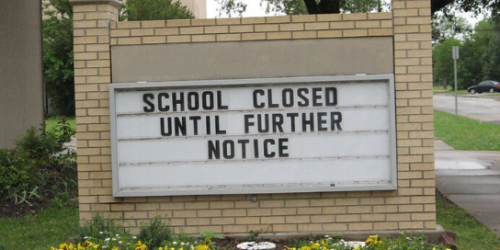
Smarter pay strategies that shrink special education, English learner, and STEM shortages
Here’s how large school districts are using differentiated compensation to fill critical staffing gaps.
Learn more about evidence-based approaches to strengthening and diversifying your teacher workforce with NCTQ’s reports, guides, and articles.

Here’s how large school districts are using differentiated compensation to fill critical staffing gaps.
September 10, 2025
Michael Sheehy

AI may be a powerful tool in the classroom, but, how are we protecting students from low-quality lessons it creates?
August 28, 2025
Heather Peske

New analysis reveals more than 90% of large districts pay more for master’s degrees, despite no evidence of improved teacher effectiveness.
August 13, 2025
Katherine Bowser

One thing we know for certain: K-12 educator workforce data is lagging, lacking, and limited.
June 23, 2022
Patricia Saenz-Armstrong

Now is the moment to chart a new path forward.
June 23, 2022
Heather Peske

Given how disruptive it is for schools to deal with even a single absent teacher, you’d think we would know such things as how many teachers are quitting.
February 24, 2022
Kate Walsh

How several large school districts are revisiting policies surrounding pay and health benefits to attract prospective substitute teachers.
January 13, 2022
Patricia Saenz-Armstrong

Teachers faced many difficulties last year due to the pandemic. Concerns about teachers not returning for the 2021-22 school year weren’t unfounded. We looked at the incentives that 148 large school districts in the U.S. used to attract and retain teachers during the Fall of 2021.
December 9, 2021
Patricia Saenz-Armstrong

A round-up of NCTQ’s most-read District Trendline blog posts from 2021.
December 9, 2021
Nicole Gerber

National jobs data suggests the wave of predicted teacher resignations has not come to pass.
October 28, 2021
Abigail Swisher

Working conditions play a crucial role in teachers’ wellbeing, especially after 18 taxing months of reinventing education due to the pandemic. A recent report uncovers that class sizes are a major contributing factor. In this month’s District Trendline, we examine the contractual obligations of 148 school districts for class sizes.
October 14, 2021
Patricia Saenz-Armstrong

To attract teachers to rural areas we either have to come up with a significant and steady infusion of cash—or life in rural America needs to become a more attractive proposition.
June 29, 2021
Kate Walsh

Just as the U.S. managed one of the most successful rollouts of COVID vaccines of any nation, so too can we dramatically improve the literacy rate in the nation.
April 22, 2021
Kate Walsh

COVID-19, coronavirus, pandemic, learning loss, remote learning, virtual learning, homeschooling, homeschooling online, homeschooling k-12, school closings, education gaps, educational gaps
March 25, 2021
Kate Walsh

New data & analysis from negotiated agreements on school reopening, PPE, teacher eval, leave, & more.
January 14, 2021
Patricia Saenz-Armstrong

Of the 24 states that have released guidance on teacher evaluation for SY20-21 thus far, 21 are still requiring summative evaluations for all teachers.
November 9, 2020
Shannon Holston

In the absence of a federal protection, it becomes the jurisdiction of individual districts to lay out protocols.
October 8, 2020
Patricia Saenz-Armstrong

Although districts reopening schools virtually may have less need for substitute teachers due to teachers’ reduced exposure to illness, districts reopening in-person need more substitutes than normal, as social distance measures reduce class sizes and teachers may be absent more often due to increased exposure to illness.
September 10, 2020
Patricia Saenz-Armstrong

Never much a defender of local control in education, I now think we have nothing to lose by shifting some authority to local communities to put a plan in motion for educating kids.
July 23, 2020
Kate Walsh

New analysis from Chelsea Coffin and Tanaz Meghjani at the D.C. Policy Center explores some of the teacher workforce data from D.C. public schools, and reports on how key education officials and educators there are thinking about teacher retention and recruitment during the COVID-19 crisis.
July 14, 2020

As school districts work out next year’s instructional format and take stock of their teacher workforce, districts in a position to hire are also readying themselves for a potentially unprepared influx of novice teachers.
July 9, 2020
Patricia Saenz-Armstrong

No district wants to lay off personnel. But if it ought to be done, NCTQ (along with other education researchers and policy advocates) has laid out ways to make layoff decisions that cause the least harm to students, provided that teacher quality considerations are prioritized.
June 11, 2020
Patricia Saenz-Armstrong

The 2019-2020 school year is coming to a close, but school district leaders will continue to face the challenges of distance learning as they plan for both summer school and fall openings.
May 28, 2020
Nicole Gerber

In this unprecedented time of school closures, districts must walk a fine line regarding teacher evaluations.
May 1, 2020
Kency Nittler, Patricia Saenz-Armstrong

States must now consider how these coronavirus-related closures are impacting student teaching and other licensure requirements.
April 16, 2020
Patricia Saenz-Armstrong

When the COVID-19 crisis hit, we asked what, if anything, districts had spelled out in their existing policies relevant to teacher work, pay, and leave in situations of emergency school closures. Then we started collecting the new policies districts are adopting for teachers.
April 9, 2020
Nicole Gerber

This is a grave time. As we try our best to weather this storm, we find ourselves asking a lot of questions that produce answers no more reliable than what we might expect from a Ouija board.
March 26, 2020
Kate Walsh